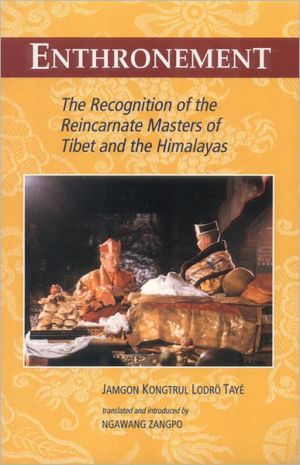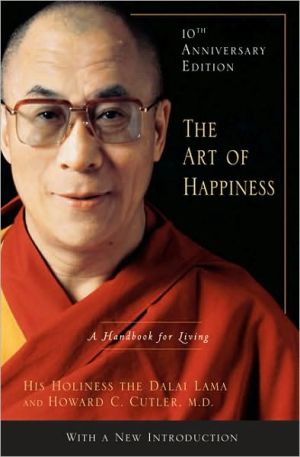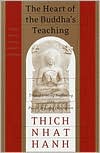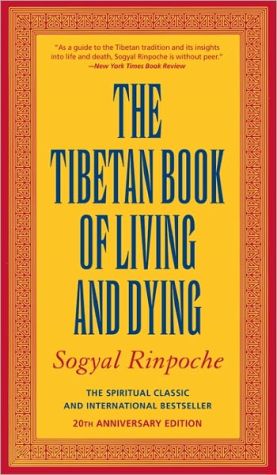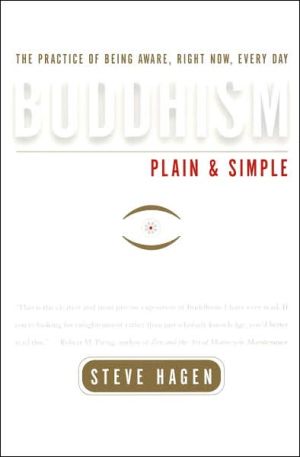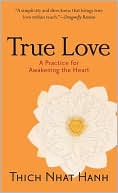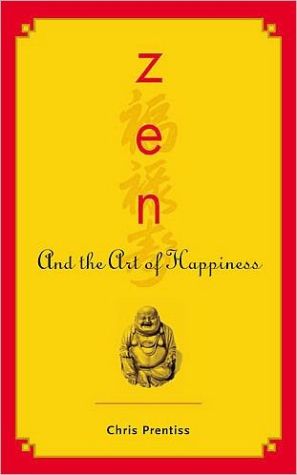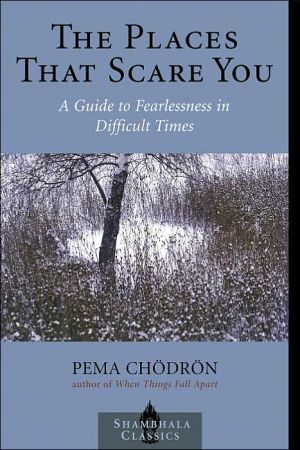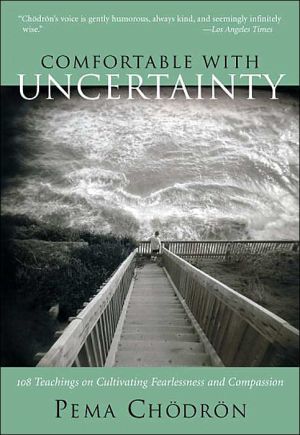Enthronement: Recognition of the Reincarnate Masters of Tibet and the Himalayas
Even the most casual contact with the culture, politics, or religion of Tibet and the surrounding region brings outsiders face to face with the institution of reincarnate spiritual masters. Past masters are identified as small children installed in their predecessor's monastery in a ceremony called "enthronement" and educated to continue the work of their former incarnation. This custom has provided a principal source of spiritual renewal for Himalayan Buddhists for the past thousand years....
Search in google:
Facinationg look at the process of identifying and re-establishing reincarnated spritiual masters. Publishers Weekly The doctrine of reincarnation is central to Tibetan Buddhism, for it is through reincarnation that its inspired masters are believed to transmit their spiritual authority from one generation to the next, from one body to the next. A sort of What You Always Wanted to Know About Reincarnation but Were Afraid to Ask, this book examines the death rites and explains how the reincarnated masters are recognized in their new forms. A rich historical perspective is provided in the discussion of one particularly celebrated casethe death of Kalu Rinpoche in 1989 and the recognition of the youthful reincarnated master who had been born to the wife of Lama Gyaltsen, Drolkar, 18 months after Rinpoche's death. This case is augmented by an interview with another incarnate spiritual master and leader of the Kagyu lineage of Tibetan Buddhism: Tai Situpa Rinpoche. Tai Situpa is well known in the West and is often called upon to find and recognize other reincarnated masters. These stories precede the central text of the book, which describes the enthronement ritual and procedures for the enthronement of a reincarnated master. The book also contains a glossary and informative footnotes. (Aug.)
\ \ \ \ \ Chapter One\ \ \ The Recognition of Reincarnate\ Masters\ \ \ Shortly after my teacher, Kalu Rinpoché, died in 1989, I visited Tai Situ Rinpoché at his monastery in northwest India. Although that was the first time I asked Tai Situ Rinpoché for permission to translate this text, it was not until 1992, when our monastery was preparing for the enthronement ceremony of the child Tai Situpa had recognized (and the Dalai Lama had confirmed) as the reincarnation of Kalu Rinpoché, that I began work on this translation. I was interested in this text because it described enthronement, the first major public event in the life of a reincarnate lama. Many of the great teachers who guided my generation of Buddhists during the late sixties and seventies and passed away in the eighties have been reborn in the late eighties and early nineties and are now being enthroned, reinstalled in their former institutions. To answer my own and others' questions concerning this new phase of our lives with Tibet's tulkus, I undertook this translation with Tai Situ Rinpoché's blessing.\ Tai Situpa travels throughout the world to foster spiritual awakening through a wide range of activities which reflect his enormous talent that flows far beyond what we might associate with a Buddhist monk and teacher. He is an artist, a writer, an administrator, a spiritual guide, and, above all, a citizen of the world. But he is also a deeply traditional keeper of the flame of centuries of spiritual awakening in the Himalayas: he has recognized over a hundred infants as reincarnate masters. These have beenfound according to his directions, have been enthroned, and are being educated. They will ensure the continuity of Buddhism for the next generation of Buddhists in the Himalayan region and for many around the world. It was principally for this reason that I wished to interview him for this book.\ This interview took place on August 20, 1993, at Rumtek Monastery, near Gangtok, Sikkim, northeast India. We sat in a large room on the second floor of the monastery: Tai Situpa's reception room and office during the day, his bedroom at night. It was a simple but exquisite setting: the floors of the room were of a dark-colored polished wood, his and other monks' robes a deep wine, and lively, multicolored religious paintings framed in ornate brocade decorated the walls. But it was the golden yellow of his shirt and the sunlight filtered through curtains of the same color which suffused the room. His attendants' and messengers' constant coming and going reminded me that he was a very busy man, but he was relaxed: he made me feel as if we had all the time in the world. We spoke in English. Tai Situpa's command of English is impressive; his usage echoes the richly flavored blend of British, American, and Indian English one hears among Tibetans educated in India. He is sharp and quick-witted: he often answered questions before I had finished my sentence. He was thoughtful, serious, and forthcoming but laughed easily and often, often self-deprecatingly\ We began by speaking of the state some meditation masters (as well as some "ordinary persons") enter at death, a sort of suspended animation in which the person may rest for many days after the doctor proclaims the individual dead. He or she no longer breathes and has no heartbeat, but the skin remains supple and lifelike, the heart area warm, and the head upright. The Tibetans call this tukdam (thugs dam), an honorific word meaning "meditation." This state might be considered the first step in the process of death and rebirth of many reincarnate masters.\ To better comprehend the process of death and rebirth of a reincarnate master, I asked many questions concerning the degree of choice exercised by the reincarnate master compared to the degree of choice we ordinary persons have over the circumstances of our rebirth. Tai Situpa then discussed the process of recognition and confirmation of the reborn masters.\ Two comments from this interview seem to me to be particularly revealing of the Tibetan relationship to this system. First, the child is not expected to conform to the demands of a system; the onus is on the system to nourish the child and to respond to his or her needs.\ \ \ Tai Situpa: We cannot lock them [reincarnate masters] into this one, fixed situation, because everything might be perfect, but they intentionally try to manifest something not so perfect in order to make some benefit out of it. That could be. [page 75]\ \ \ In other words, the Tibetans do not expect their system to remain static, no matter how ideal it might seem. Although the child might sometimes seem (and feel?) like a prisoner of the monastery, it is recognized that spiritual awakening is the innate potential of a human being, never that of any human invention, institutions included.\ Second, there is no accepted central authority for recognizing reincarnate masters. Even the Dalai Lama's "spiritual authority" exists only inasmuch as Tibetans have faith in him. Tai Situpa refers here to the recognition of the latest reincarnation (the seventeenth) of the first reincarnate master of Tibet, the Karmapa:\ \ \ If they don't have faith and trust — you can see what's happened in the case of His Holiness Karmapa. You can see. Karmapa was born there [in eastern Tibet]; he was recognized through his own writing in the most historical, most tradittional way, His Holiness the dalai Lama was the supreme authority [who gave confirmation to the recognition], and he's already been enthroned in Tsurpu [Karmapa's main monastery in central Tibet] for more than one year. Still, some people don't want to believe. So if there's no faith, no trust, no devotion, it doesn't work for them. [page 77]\ \ \ The choice of candidate for Karmapa's title and throne remains an insoluble controversy, with two candidates proposed: one supported by His Holiness the Dalai Lama, Tai Situpa, and others; another, by Shamarpa and his circle of followers. Both candidates have been enthroned: one in Tibet, the other in India. Both sides agree that there can be only one Karmapa (as is the case with the Dalai Lama). Nevertheless, it is entirely possible that both sides would agree that both candidates are reincarnate masters, as few Tibetans imagine that great bodhisattvas limit their activity in this world to just one manifestation. The problem lies more in the realm of spiritual authority, a question that in the Tibetan world is multiple choice. There is one simple answer—confidence in the Dalai Lama—and a multitude of less orthodox alternatives.\ As unseemly as the present situation appears, it does not seem to be unusual. Tibetan Buddhism is perhaps the most disorganized of organized religions. Its greatest wealth lies in the quality of the traditions of philosophy and meditation that the Tibetan masters have kept vibrantly alive. The masters' ranks have been enriched continuously for centuries by the infant reincarnate lamas recognized by such spiritual leaders as Tai Situ Rinpoché. The name or title a tulku finally bears is a critical issue for those who live in the worldwide Tibetan neighborhood, but the world at large only stands to gain from the presence of bodhisattvas in the world, regardless of the names they are given.\ The Six Perfections\ An Oral Teaching\ \ \ By Geshe Sonam Rinchen\ Translated by Ruth Sonam\ Edited by Ruth Sonam\ \ Snow Lion Publications\ Copyright © 1998 Ruth Sonam. All rights reserved.\
Preface9 Acknowledgments13 INTRODUCTION15 A Historical Perspective16 Bodhisattvas: Spiritual Heroes and Heroines19 The Tulku System in Modern Tibetan Society26 Difficult Choices for Modern Tibetan Parents27 The Lack of Choices for Modern Tibetan Women29 Death and Rebirth among the Tibetans32 Kalu Rinpoché (1905-1989)32 The Last Days of Kalu Rinpoché's Life38 Kalu Rinpoché's Return46 The Young Reincarnate Master Meets the World49 The Tulku's Father Meets the Media54 PART ONE: THE RECOGNITION OF REINCARNATE MASTERS — AN INTERVIEW WITH TAI SITUPA The Recognition of Reincarnate Masters61 An Interview with Tai Situpa65 PART TWO: THE ENTHRONEMENT OF A REINCARNATE MASTER Introduction to the Text87 The Historical Context87 A Brief Overview of the Text93 THE CELEBRATION OF THE OPENING OF ONE HUNDRED DOORS TO GREAT WONDER by Jamgon Kongtrul LodröTayé97 Chapter One: The Five Magnificent Aspects of Our Spiritual Master's Manifestation in the World101 Tai Situpa's Magnificent Teacher: Karmapa102 Tai Situpa's Magnificent Residence: Palpung Monastery105 The Magnificent Time: The Occasion of the Investiture of Tai Situpa107 The Magnificent Entourage Surrounding Tai Situpa108 The Magnificent Spiritual Instructions112 Chapter Two: Tai Situpa's Special Qualities117 Chapter Three: A Step-by-Step Description of Enthronement and the Presentation of Offerings129 The Acts Which Cultivate Merit and Wisdom129 The Investiture of Authority131 The Preparation131 The Main Ceremony of Investiture132 The Conclusion of the Investiture135 The Offering of the Universe in the Form of a Mandala137 The Mandala: The Main Form of Offering137 The Essence of the Offering138 The Literal Meaning of the Sanskrit Word Mandala139 The Styles in Which Mandalas Are Offered139 The Reasons for Offering a Mandala141 Directions for Making the Offering141 The Visualization That Accompanies the Offering142 The Wishes That Should Accompany the Offering148 Dedication and Colophon153 Appendix: On Spiritual Kings and Crowns155 The Red Crown of the Tai Situpas157 The Tenth Tai Situpa, Péma Kunzang163 The Incarnations of Karmapa and Tai Situpa166 Notes167 Names Mentioned in the Text177 Texts Cited187
\ Publishers Weekly - Publisher's Weekly\ The doctrine of reincarnation is central to Tibetan Buddhism, for it is through reincarnation that its inspired masters are believed to transmit their spiritual authority from one generation to the next, from one body to the next. A sort of What You Always Wanted to Know About Reincarnation but Were Afraid to Ask, this book examines the death rites and explains how the reincarnated masters are recognized in their new forms. A rich historical perspective is provided in the discussion of one particularly celebrated casethe death of Kalu Rinpoche in 1989 and the recognition of the youthful reincarnated master who had been born to the wife of Lama Gyaltsen, Drolkar, 18 months after Rinpoche's death. This case is augmented by an interview with another incarnate spiritual master and leader of the Kagyu lineage of Tibetan Buddhism: Tai Situpa Rinpoche. Tai Situpa is well known in the West and is often called upon to find and recognize other reincarnated masters. These stories precede the central text of the book, which describes the enthronement ritual and procedures for the enthronement of a reincarnated master. The book also contains a glossary and informative footnotes. (Aug.)\ \
